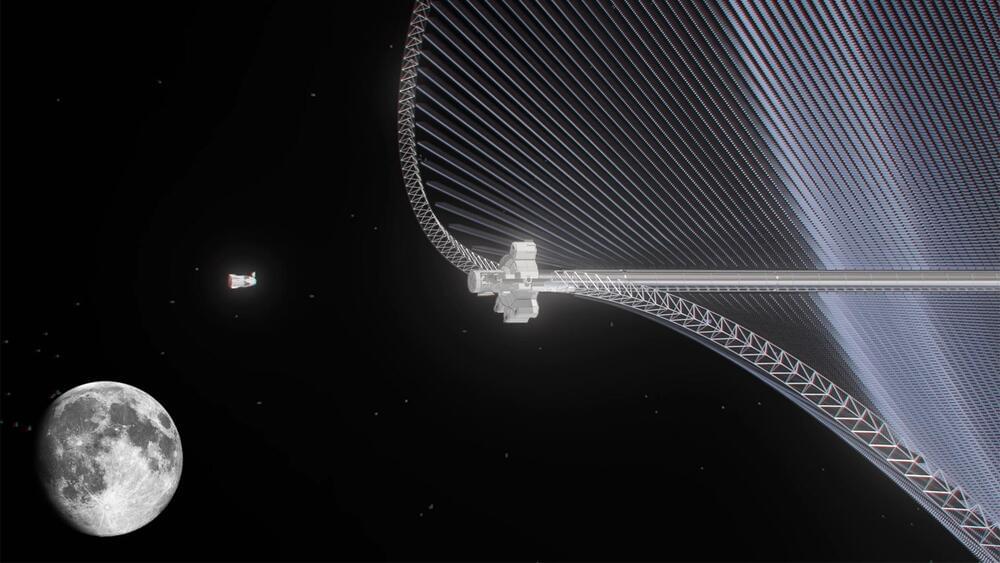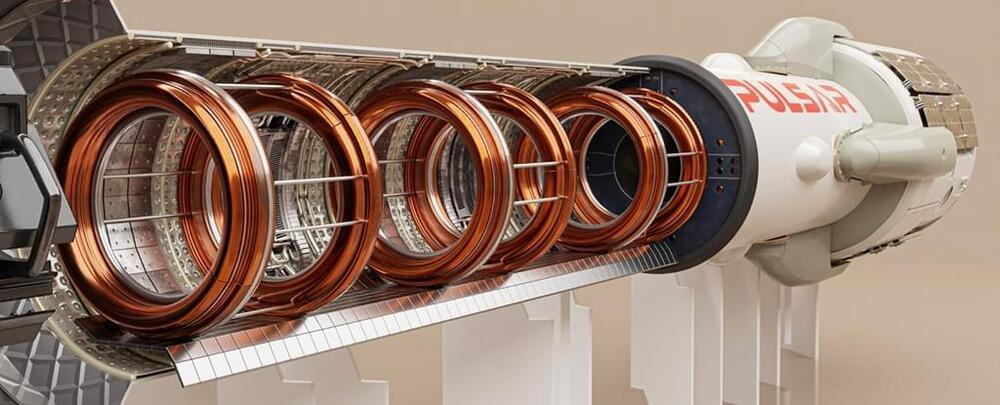Year 2019 mini fusion device 😗😁.
Researchers spot the signatures of nuclear fusion in a table-top-sized setup commonly used to study the plasmas found in stars and other astrophysical objects.

A revolutionary new high-temperature superconducting tape could lead to the development of small, efficient tokamak nuclear fusion reactors.
A groundbreaking high-temperature superconducting tape has been devised that could prove revolutionary in our quest to develop sustainable nuclear fusion, reports IEEE Spectrum.
GRETCHEN ERTL/CFS/MIT PLASMA SCIENCE AND FUSION CENTER
A revolutionary material.

The first observation of neutrinos produced at a particle collider opens a new field of study and offers ways to test the limits of the standard model.
Neutrinos are among the most abundant particles in the Universe, but they rarely interact with matter: trillions pass through us every second, but most of us will never have even a single one interact with the matter in our bodies. Nonetheless, scientists can study these particles using high-intensity neutrino sources and detectors that are large enough to overcome the rarity of neutrino interactions. In this way, neutrinos have been observed from the Sun, from cosmic-ray interactions in the atmosphere, from Earth’s interior, from supernovae and other astrophysical objects, and from artificial sources such as nuclear reactors and particle accelerators in which a beam of particles hits a fixed target. But no one had ever detected neutrinos produced in colliding beams. This feat has now been achieved by the Forward Search Experiment (FASER), located at the Large Hadron Collider (LHC) at CERN in Switzerland [1].
As neutral particles, neutrinos cannot be directly observed by detectors of the kind used in particle colliders. Instead, scientists study neutrinos via the particles produced when incoming neutrinos interact with matter: the properties of the incoming neutrinos can be inferred from the measured properties of their interaction products. While these interactions are always rare, their probability increases with neutrino energy. In a particle collider, the highest energy neutrinos are most likely to be produced in a region of the collider where there are no particle detectors. Collider experiments are built to surround the colliding beams with detectors, with only a small central region left empty to allow for the entry and exit of the beams. It is in this empty “forward” region, along the collision axis, that the highest energy neutrinos are most likely to be produced.
Make nuclear power safer by tapping the gold mine in the spent fuel rods by using molten salt reactors and small modular reactors for both safe nuclear plant back up power and for microgrids that will be less susceptible to an EMP or CME E3 waveform. Watch to learn!
Contact Steven Curtis:
[email protected].
wastetoenergynow.org.
(702) 219‑6463
GoldBacks from Galactic Greg’s affiliate link (Use coupon code GreenGregs):
Inspire your kids to love science!
SAVE 20% OFF New Science Kits Using Code: NEWKITSSAVE20 At Steve Spangler Science dot com! Great Educational Products For Kids! SHOP NOW! https://www.pntra.com/t/SENKTExNSUhDR05OSUxJQ0dPRkxGRw.
For gardening in your Lunar or Mars habitat GalacticGregs has teamed up with True Leaf Market to bring you a great selection of seed for your planting. Check it out: http://www.pntrac.com/t/TUJGRklGSkJGTU1IS0hCRkpIRk1K
Awesome deals for long term food supplies for those long missions to deep space (or prepping in case your spaceship crashes: See the Special Deals at My Patriot Supply: www.PrepWithGreg.com.

Superconductors—found in MRI machines, nuclear fusion reactors and magnetic-levitation trains—work by conducting electricity with no resistance at temperatures near absolute zero, or −459.67°F.
The search for a conventional superconductor that can function at room temperature has been ongoing for roughly a century, but research has sped up dramatically in the last decade because of new advances in machine learning (ML) using supercomputers such as Expanse at the San Diego Supercomputer Center (SDSC) at UC San Diego.
Most recently, Huan Tran, a senior research scientist at Georgia Institute of Technology (Georgia Tech) School of Materials Science and Engineering, has worked on Expanse with Professor Tuoc Vu from Hanoi University of Science and Technology (Vietnam) to create an artificial intelligence/machine learning (AI/ML) approach to help identify new candidates for potential superconductors in a much faster and reliable way.

According to a study by Astrostrom for ESA, future Moon bases could be powered by a giant space butterfly called the Greater Earth Lunar Power Station (GEO-LPS) covered with solar panels made from lunar materials beaming microwaves to the surface.
One of the major design concerns in setting up a lunar base is finding a reliable means of powering it. Solar power might seem the obvious answer, but with lunar nights lasting 14 Earth days, it isn’t a practical option. However, though the most promising alternative is currently a small nuclear reactor, solar may not be out of the running.
The idea of solar power plants in space has been around for well over half a century. On Earth, solar panels are limited by night time, atmospheric haze, and bad weather, making them only capable of intermittent power generation with limited efficiency. On the other hand, in space, where there is no night and no atmosphere, solar power becomes very attractive.

The project is expected to be completed by 2026 and could help meet multiple energy demands.
China has completed a significant step toward establishing the world’s first commercial onshore small modular reactor. It has finished the installation of the core module of the reactor that it began building in 2021, the South China Morning Post.
With a power generation capacity of not more than 300 MW, small modular reactors (SMR) are believed to be the future of nuclear fission reactors. The advanced nuclear reactor design allows the power plant to be scaled down and established in remote locations that cannot be connected to the grid.
New Video Nuclear Powered Submarine Link https://youtu.be/J0lb46Zi5-s.
What is Implosion?
Implosion is a process of destruction by collapsing inwards the object itself.
Where explosion expands, implosion contracts.
In the case of the Titan Submergible. the Implosion was caused due to very high hydrostatic pressure of the surrounding water, which happen within a fraction of a millisecond, as shown in the animation.
At the depth the Titanic rests, there is around 5,600 pounds per square inch of pressure.

FUTABA, Japan (AP) — At Japan’s tsunami-wrecked Fukushima Daiichi nuclear plant, giant blue pipes have been constructed to bring in torrents of seawater to dilute treated, radioactive water under a plan to discharge it gradually into the Pacific Ocean.
Workers were making final preparations as Associated Press journalists received a rare opportunity Friday to get a look at key equipment and facilities for the release, expected in coming weeks or months.
The International Atomic Energy Agency has looked at Japan’s wastewater-release plan and said it would cause negligible radioactivity in the sea and no effect on neighboring countries. But the plans continue to draw strong protest and no starting date has been set.

Nuclear fusion propulsion technology has the potential to revolutionize space travel in terms of both speeds and fuel usage. The same kinds of reactions that power the Sun could halve travel times to Mars, or make a journey to Saturn and its moons take just two years rather than eight.
It’s incredibly exciting, but not everyone is convinced this is going to work: the tech needs ultra-high temperatures and pressures to function.
To help prove the viability of the technology, the largest ever fusion rocket engine is now being built by Pulsar Fusion in Bletchley, in the UK.